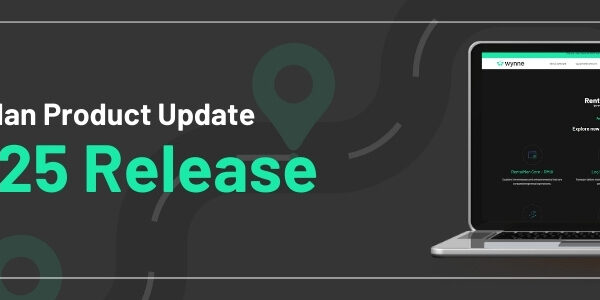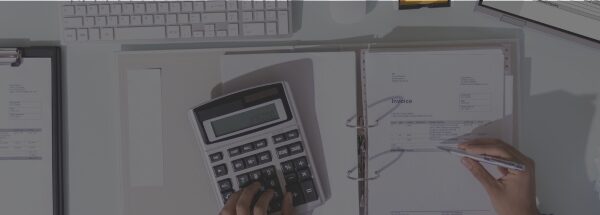
Note: The following article was featured in the November/December issue of Pro Contractor Rentals.
Ancillary rental fees can help capture additional revenue
Are your ancillary fees 15 percent of your revenue? Industry research suggests that equipment rental companies get 15 percent of their revenue from ancillary fees and incremental charges. There are other fees that may substantially increase to your revenue stream.
Based on suggestions Wynne Systems have assembled in its recent e-book, The Comprehensive Guide to Ancillary Fees, these fees may have a positive effect on your bottom line. Here are 12 ancillary charges to consider in your rental operation.
1. Environmental charges
This fee is not a government mandated tax, surcharge or fee, but rather a fee that offsets the hard and soft costs of proper environmental management. Any money recouped from this method is booked to your ancillary revenue stream. Look at your hard out-of-pocket costs each year for used oil, tires, solvents, lubricants or clarifiers disposal. Then calculate how much to charge to cover those costs. It may be charged as an additional percentage for each rental day or as a flat fee based on the equipment classification.
Before implementing an environmental fee, check with your legal department about state, county and local regulations.
2. Loss/damage waivers
A loss/damage waiver (LDW) is charged in addition to standard rental fees. It benefits both parties and generates revenue that can replace or repair damaged equipment while giving customers piece of mind during the rental period.
Customers must understand the liability associated with renting equipment and how paying the extra LDW waiver mitigates that liability. LDW is not insurance; instead it is an agreement between the rental center and the renter that limits his or her financial responsibility for loss or damage to the rented equipment.
The damage waiver should not release the customer from all liability; just the areas that are not in the customer’s control. This generally covers vandalism, theft, fire, smoke, weather-related or equipment failure. Any misuse of the equipment, neglect or failure to maintain the equipment properly is not covered.
Generally 10 to 14 percent of the rental rate can be charged for LDW coverage. This fee goes directly to the revenue line. It can be set aside to cover damages or go directly to general revenue funds.
Your sales team should be able to explain what the fee covers and they must understand it is not insurance.
Some rental centers charge a damage waiver fee if no damage waiver insurance is provided by the renter. If rental rates are discounted, LDW fees should be based on a percentage of the gross, not discounted rental fee.
3. Transportation charges
Transporting equipment to and from customers is expensive. The employee’s total compensation is only one of transportation cost drivers. The cost also includes truck and trailer depreciation, maintenance, insurance, license, registration and third-party costs.
if you’re charging a flat fee for each trip, you are likely not recouping all of the expenses, especially if the equipment requires a special type of vehicle or permits or if the jobsite is far away.
Consider charging a transportation fee based on a combination of travel distance and type of vehicle. Create rates based on a per-mile or kilometer unit of measure, making sure you have special rates for vehicles with higher cost of ownership.
Another option is to charge an hourly rate for the total time spent transporting equipment. Drivers may arrive as scheduled and sit idle, waiting for operators to finish the “one last thing,” or find themselves at a jobsite where the equipment is inaccessible. A standby time for waiting drivers may also work.
An added fee makes sense for transportation requests that occur after business hours. Emergency deliveries could incur an immediacy fee for having to reschedule drivers’ routes and readying equipment.
The transportation charge should be a line item on the invoice and not added into the rental cost of the equipment. That helps establish proper state sales and use tax to be applied for the rental charge vs. transportation.
4. Add-on sales
Renting or selling additional items to go along with the primary rental can boost overall sales. Your sales team should be familiar with what items they should recommend, or suggest to customers what they may need to get the job done. Stocking these items makes it convenient for customers and those additional and often minor sales add up to extra revenue.
To prepare sales personnel for add-on selling, break it into three types of lists:
First, make a list of closely associated items that customers might want to rent in addition to the item they requested.
The second list should consider the types of jobs the equipment does and focus on additional tools or supplies needed to complete that job. For example, if you have an engineer who had a specific job that normally uses end frames, cross pieces, joints, drop pins, planks, and other components, recommend they rent or purchase all those pieces today instead of coming back for them.
Renters also make purchases. Depending on the equipment, there are a number of items you might suggest they buy or rent. For example, those renting access equipment may need a safety harness. Other items: extension cords, safety goggles or other tools can create extra revenue and protects your clients from potential hazards.
Adding merchandise to your showroom can boost sales. It is a big convenience for your customers. Although the prices you charge may be higher, it is more convenient for the customer to get it all in one stop.
5. Fuel and services
In addition to charging for fuel consumed, you need to mitigate the costs of having a fuel tank on premises or the cost incurred to get the fuel on site.
Before sending equipment out on rent, include the fuel charge for the equipment’s full tank capacity, even on smaller fuel-powered items. For items that include propane tanks, you can charge for the full tank of propane every time it goes out on rent.
Upon return, rely on the fuel gauge to measure how much to invoice rather than waiting for fuel to be replenished and calculating costs per gallon. This speeds equipment processing, especially in high-volume facilities. Charging by quarter-tank increments allows yard workers to quickly read the gauge and add fuel as a sales item by the amount missing during the check-in process.
Another option is to add a refueling charge, but make sure it accounts for all costs such as market fluctuations, pump costs, refueling time or travel time if equipment is fueled offsite. Include fuel services as a separate line item. You can add that charge to the fuel cost itself or charge for the fuel plus a service fee.
6. Services
Some equipment, such as chain hosts, hole hoists and tuggers require periodic inspections to remain OSHA-compliant. Providing inspection and testing of these items on a recurring basis is required and an expense that you can charge to your customers. Track the required inspections and charge a flat fee for each inspection on top of the standard rental charge.
Another option is to provide an experienced operator with the equipment. Add the hourly rate of the operator to the rate of the equipment and list them as two line items on the invoice. Some jobs require extra manpower to supervise the job to make sure it is compliant. For example, if the job requires wiring that meets a certain standard, a certified electrician can be billed out by the hour.
Setting up and dismantling equipment can be billed out by the hour or completed job. For example, you may send a team to build scaffolds at a jobsite. This can be invoiced by charging a straight hourly rate, or by charging based on the linear measurement of scaffolding completed.
Safety is a critical aspect of any job, and companies may need to hire safety officers, paramedics or firemen to supervise activities. Providing these personnel in addition to equipment rental can increase revenue.
One often-overlooked opportunity is providing modular office or waste disposal services to jobsites. Customers can get these services from your rental center – or another vendor. Fulfilling these needs simplifies their job and helps your revenue stream.
7. Shop supplies
In the service shop, rental centers usually charge for parts and labor used during equipment maintenance. Inventoried parts, such as filters or belts, are easy to capture on an invoice, which makes it easy to recoup the cost. Labor works the same way; each shop person records the time spent working on equipment and it gets invoiced at an hourly rate.
While it seems trivial to charge the customer for a bolt, handful of washers or a bottle of brake fluid, it adds up. The simplest way is to use a percentage of the total work order to charge for these items. It can be added as a shop supply fee as a separate sales line item.
Typically, two percent is a reasonable amount and should cover most of the items consumed on a work order performed at your facility or at the jobsite. Set a minimum that’s always charged to assure you recapture some of that cost. Conversely, you can also include a maximum threshold that protects your customer.
8. Set rates for single, double and triple shifts
For metered equipment, tracking hours used and being able to charge for excess hours used is imperative for rental companies. When renting metered equipment, the assumption is that a one-day rental is the equivalent of a set number of hours per day, week or month. Excess hours should be charged at some premium, depending on the amount of additional hours the equipment was in use.
One way rental companies charge for excess hours is by billing for single-, double-, or triple-shift use. If a standard work day equals eight machine hours, the customer would be charged a single rate if they used the machine for eight machine hours or less per day. If they used it for more than eight machine hours, but less than 16, they would pay a rate that was 1.5 times the rate. If the machine runs more than 16 machine hours, then they would be charged two times the standard rate.
Another way to bill for overage is based on the exact excess meter hours. First, determine your hourly rate for excess hours by dividing the hourly rate by the number of hours considered “double shift.” For example, if 16 hours is a double shift, and your daily rate is $100, divide $100 by 16 hours to get an hourly excess meter rate equal to $6.25 per hour.
When the machine is returned, compare the hour meter reading before the rent to after and calculate average per-day usage. For extended rentals, it’s a good idea to have a salesperson or technician periodically make an hour meter reading, then monitor it for excessive usage. A mid-rental period visit might head off hard feelings with the customer at the end of the rental and it may also uncover additional rental opportunities.
Telematics can also track long-term rentals by tracking use remotely. Monitoring telematics could also help you rent more equipment. If the equipment is being consistently used for eight hours a day, they may need to rent a secondary machine.
9. Damaged or missing accessories
Accessories that go out with rental equipment often come back damaged or missing. Use a checklist to assure all accessories are either correctly assembled or are included with the rental package.
If an accessory is missing, the customer may be liable for the cost of replacing the item. If the customer accepted your loss and damage waiver protection, it will depend on the terms and conditions of that agreement.
Accessories also include items that do not come directly out of your inventory, such as keys, lanyards, equipment manuals and fire extinguishers. These should all be noted as present upon check-out and the condition or status reviewed upon check in.
Other damages that can be invoiced on a work order include:
• Repainting of equipment
• Body repair due to rollover or misuse
• Replacing mirrors or glass
• Replacing or repairing seats or seatbelts
• Replacing or repairing of any damaged components on the dashboard
10. Wear items
Generating a condition report upon the return of the equipment helps track consumable items such as blades and points. This condition report shows the state and even the measurements of wear points upon return.
Yard personnel prepping equipment for delivery should use a measuring tool to get the exact measurement in millimeters or other unit of measure. Once the equipment is returned, measure again and charge by the millimeter or the unit of measure. Add this unit of measure as a sales item. Any items with teeth or brooms can be measured and charged a usage fee.
Calculating what to charge per increment is solely at your discretion. However, one charge for all types of accessories will not pay off in the long run. Higher-cost wear items need to have a premium surcharge.
11. Cleaning charges
Cleaning fees need to cover the cost of labor, cleaning fluids, power washers, pumps, hoses and electricity. A flat-rate fee can be used, but consider an hourly fee for equipment that comes back particularly filthy.
12. Telematics charge
Customers will pay a premium for information on the equipment they’re renting. They want to know how much the equipment is being used, or if it is being used consistently for eight hours a day. If equipment is working in a high-risk area, telematics can send alerts if it leaves a defined geo-fence. It can also issue alerts if the equipment is running during hours when it should not be used.




